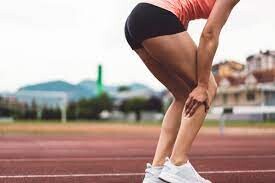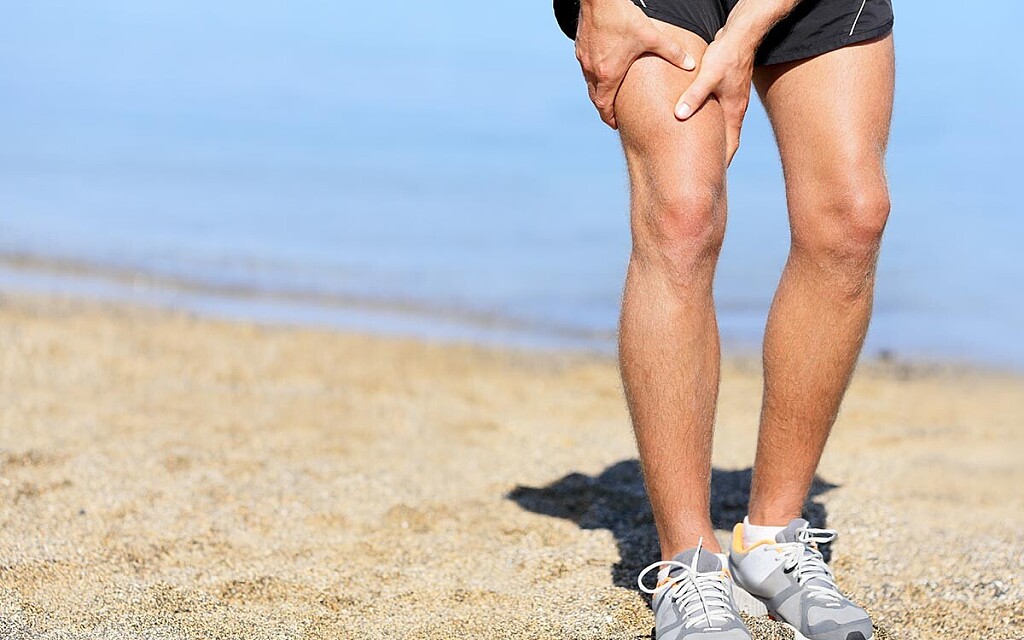Running News Daily
Running News Daily is edited by Bob Anderson. Send your news items to bob@mybestruns.com Advertising opportunities available. Train the Kenyan Way at KATA Kenya and Portugal owned and operated by Bob Anderson. Be sure to catch our movie A Long Run the movie KATA Running Camps and KATA Potato Farms - 31 now open in Kenya! https://kata.ke/
Index to Daily Posts · Sign Up For Updates · Run The World Feed
Delayed Onset Muscle Soreness: A Runner’s Friend or Foe?
Recovery from meniscal injuries can take between 4 – 24 weeks if you start effective treatment early and you manage it well.
Minor to moderate meniscal tears, both acute (from traumatic injuries) and degenerative (from wear and tear), can heal with conservative treatment.

The more severe your symptoms and having other injuries like anterior cruciate ligament injuries with your meniscal tear, will increase your healing time.
What are the treatment options for a meniscal tear?

A conservative rehabilitation program for your knee that includes rest, ice, medication and a structured exercise program is often enough to heal a meniscal tear on its own.
If conservative treatment doesn’t improve your symptoms within three months, your tear may require surgical treatment.
Do all meniscal tears require surgery?
No, treatment of a meniscal tear depends on:
Symptoms
Age
Activity levels
Location and type
Age, symptoms, activity levels
Meniscal tears may cause mild to severe symptoms at first. For people over 40 years old, once the initial injury settles down, if your symptoms don’t interfere with daily activities, surgery is not recommended. Non-surgical treatment is preferred.
The younger you are, the less wear and tear there is in your knee joints, and the better your body heals from surgery. Surgery is a valid option if you’re young, have no other ligament injuries and your meniscal tear is from an acute injury.
Many of you have experienced extreme muscle soreness after pushing the pace during a race, running intervals or hills or trying a new weight lifting program. This painful condition is called Delayed Onset Muscle Soreness or DOMS.
The onset of DOMS after exercise is usually within 24 to 72 hours of completing a workout. Symptoms of DOMS include extreme muscle soreness and tenderness, mild swelling of muscle tissue and restricted range of motion.
What causes delayed onset muscle soreness?
While the research has not been conclusive on the causes of DOMS, there are two common theories. The first is based on an understanding of what delayed onset muscle soreness is — an accumulation of the lactic acid produced during exercise, which causes muscle pain. Lactic acid is a by-product of our cells that can exceed normal levels with strenuous exercise and create a painful acidic environment.
Most physiological studies do not support the lactic acid theory, however. This is because, after exercise, most of the excess lactic acid is flushed from your system within 30 minutes. Hence lactic acid should not cause muscle soreness one to two days after exercise. Additionally, similar blood levels of lactic acid in cyclists and swimmers do not produce the same symptoms that runners experience, further debunking the theory that lactic acid causes DOMS.
The more widely accepted cause for the symptoms of DOMS is that the muscle pain is due to extreme trauma to our muscle tissues. Running, at its essence, is controlled falling. We use our muscles to decelerate our joints as they absorb impact.
These types of muscular contractions are called eccentric contractions. Eccentric muscle contractions are performed with weight-bearing activities (walking, running, weightlifting). As the muscle fibers slow down and control the rapid deceleration of a runner’s body weight (especially with a new or harder than normal workout), they tear.
About 24 hours after the bout of exercise, the effects of inflammation appear as pain, swelling and stiffness. The inflammatory process basically cleans up damaged tissue and repairs and/or produces new tissue. The pain is caused by inflammatory enzymes and chemical by-products that sensitize pain receptors and cause cellular swelling. The cellular swelling can be extremely painful and can last about 72 hours.
The new muscle fibers that are produced are usually more adaptable to the stress and strain of running. In other words, it is out with the bad and in with the better. This is not news to many experienced runners. Tough runs and workouts make us stronger. So, for those who ask the question, “Is DOMS good?” the simple answer is yes, it can be.
Running, at its essence, is controlled falling. We use our muscles to decelerate our joints as they absorb impact.
Understanding DOMS: the role inflammation plays
Traditionally, inflammation has a bad reputation. Nonsteroidal anti-inflammatories (NSAIDS) are common medications used by runners to reduce post-run inflammation and pain. Some runners will even take NSAIDS prior to a run to prevent inflammation. However, studies have shown that not only are NSAIDS tough on your stomach and kidneys, but they also impair the normal healing process.
So, while popping an NSAID might give you temporary relief from the pain of DOMS, it is likely leading to weaker muscle fiber formation. In fact, it could be argued that controlled inflammation is a runner’s best friend. After an abnormally long or hard run, the body has a short window of time to take advantage of the inflammatory cycle’s process of muscle fiber rebuilding and remodeling. Rather than popping a pill to soothe sore muscles after exercise, consider a natural, proactive approach to relief and recovery.
DOMS recovery: how to get relief for sore muscles
Try these practices to optimize your body’s potential while your body recovers:
Ice Bath:
Soaking from the hips down in a cold stream, lake or in a tub full of ice for 15-20 minutes within 30 minutes of your run reduces the painful cellular swelling produced by inflammation without affecting the healing components of the inflammatory cycle. I have found that getting in the tub first and then adding the ice is the least painful method.
Active Rest:
Move! If you sit around during the healing process the remodeled muscle tissue will be stiff and shortened which over time leads to postural imbalance and injury. For example, prolonged sitting can result in tight hamstrings which could lead to a hamstring strain when you try to go for your first post-DOMS run. Walking, yoga class, cycling, elliptical trainer and pool running are all good options for exercise while recovering from DOMS. Try the Downward Dog stretch to address tightness in the hamstring, hip and calf muscles. See Fig.1 for instructions on this common yoga technique.
Stretching Lightly:
Stretching during the 24-72 period of DOMS is very different from normal stretching. The healing muscle fibers are very delicate. You do not want to overstretch and tear previously damaged muscle fibers. Take your stretches just to the threshold of discomfort and then back off a bit. Hold for up to 60 seconds. See Fig. 2-3 for instructions on how to stretch the quadriceps and hip flexor muscles.
Massage:
Seeing a massage therapist for a gentle massage, or utilizing self-massage using a foam roller, helps increase blood flow and flexibility of healing tissues. Avoid deep tissue massage for at least a week after the onset of DOMS to avoid further traumatizing healing muscles. See Fig. 4 for directions on using a foam roller on the outer leg and hip muscles.
The benefits of Delayed Onset Muscle Soreness
As a physical therapist, I work with patients to improve their strength and flexibility through various treatment approaches and prescribed exercise. am constantly trying to make changes to patients’ bodies by prescribing exercises to improve flexibility and strength. During the short period of DOMS, the body is primed for making these types of changes in a relatively short time.
I have described running as a sport that causes countless tissue tears and profound inflammation. So why should we run? Why would I recommend such a traumatic activity that can lead to such extreme muscle soreness?
Weekly, I have patients ask me if running is bad for them. Often, someone has told them not to run because it is too hard on their body. Knowing what causes DOMS, and that running is one type of workout that can lead to the condition, prompts people to question their decision to run. However, the human body is designed to adapt and grow stronger to the stresses we put on it. If we do not stress our tissues, they weaken and become prone to disease and injury.
So, I ask, “Why wouldn’t you run?”
by Therapeutic Associates
Login to leave a comment




